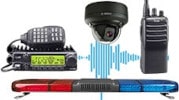Telephone Cable
A telephone cable is a type of wire with shielded or unshielded twisted pairs that transmits analog or digital signals between a telephone device and the service provider's endpoint. Choosing the right one is key to reliable, interference-free communication, especially for office or telecommunications systems. Read more...
• Telephone Cable (Straight)
• Length: 4 m
• Connectors: RJ11 / 6P4C
• White
• Telephone Cable (Straight)
• Length: 7 m
• Connectors: RJ11 / 6P4C
• White
• Telephone Cable (Straight)
• Length: 10 m
• Connectors: RJ11 / 6P4C
• White
• Telephone Cable (Straight)
• Length: 15 m
• Connectors: RJ11 / 6P4C
• White
What types of telephone cables are there?
The most common types include:
RJ11 2P2C or 6P4C connector cables
Coiled telephone cable (spring design)
Parallel (flat) and twisted pair cables
STP (Shielded Twisted Pair) and UTP (Unshielded Twisted Pair) When choosing, you should also consider protection against electromagnetic interference and the desired transmission bandwidth.
What to look for when buying a telephone cable?
Connector type: RJ11 or RJ45, and number of contacts (2, 4, or 6).
Cable length: Excessively long cables can increase signal loss.
Insulation and shielding: STP is recommended for environments with interference.
Wire gauge: typically 26–24 AWG, which affects signal transmission quality.
Material usage: Copper wire (CU) is ideal; CCA (copper-clad aluminum) should be avoided.
How does the RJ11 connector work?
RJ11 (Registered Jack 11) is a 6-position connector, typically with 2 or 4 contacts. It is most commonly used in a 6P2C or 6P4C configuration. The two middle contacts are used for the primary telephone line, while the outer contacts are used for a secondary line or data transmission.
Coiled or straight telephone cable – which one should you choose?
Coiled cable: typically 0.5–1 m in length when coiled, can be stretched to 2.5–3 m. Ideal for portable handsets.
Straight cable: less prone to damage, recommended for fixed installations, such as wall phones or DSL connections via a modem.
Differences between analog and digital telephone cables
Analog cables use a frequency range of 300–3400 Hz, while digital transmission lines may require up to 1 MHz bandwidth. Digital systems generally require cables with better shielding and higher data rates.
What is the ideal length of telephone cable for home use?
According to the ITU-T G.992.1 standard, the recommended maximum length is 100 m, but in a home environment, the ideal range is between 3 and 10 m. Above this, the use of a line booster is recommended.
What devices can you use a telephone cable for?
Landline telephone
Fax machine
DSL/ADSL modem
PBX (Private Branch Exchange) systems
POS terminals In all cases, compatibility with the connection specifications of the given device is important.
Can you use a telephone cable for the Internet?
Yes, when using DSL technologies (e.g., ADSL, VDSL), the telephone cable forms the basic physical layer. In this case, it is recommended to use a low-loss, shielded cable with an impedance of 100 ohms.
Should the telephone cable be concealed in the wall or routed externally?
Concealed installation in the wall: at least LSZH (Low Smoke Zero Halogen) sheathed cable is recommended, which is advantageous from a fire safety perspective.
Surface routing: easy to replace, can be secured with cable ducts or cable clamps.
When do you need a telephone line extension?
If the existing cable does not reach the socket, an RJ11 extension is recommended. It is important to ensure full contact and preserve the electrical characteristics.
What are telephone adapters and when are they needed?
Telephone adapters are used when different connector formats need to be matched (e.g., RJ11–RJ45 or RJ11–BT). Some adapters also have a built-in low pass filter for DSL use.
How important is the quality of the telephone cable for voice transmission?
Signal-to-noise ratio (SNR), attenuation (dB/km), and crosstalk are key parameters. Higher-quality cables provide less signal dispersion and clearer speech.
Where should you buy telephone cables?
In an online store that provides detailed product descriptions and technical specifications (e.g., cable type, AWG value, shielding type). A warranty and fast delivery are also advantages.
Common mistakes when buying telephone cables
Choosing the wrong connector type.
Buying CCA cables instead of copper ones.
Choosing a cable that is too long without amplification
Using an unshielded cable in a noisy environment
Unchecked compatibility with the device
How to choose the best phone cable?
Determine the exact purpose of use, connector type, cable length, and environmental conditions. Choose a fully copper-wired cable with the appropriate AWG and shielding for a durable and reliable connection.


